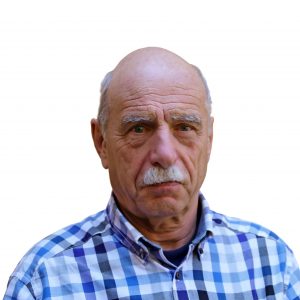Good biosecurity helps Trang Wattana Farms grow big

Trang Wattana Farms are situated in the Trang province of southern Thailand. The province’s coastline escaped the catastrophic tsunami which of course devasted the west coast and Phuket tourist area in the winter of 2004.
By Stuart Lumb
Trang Wattana Farm company is owned by Rawat Pokawattana. He has been in the pig business for 26 years and when asked why he went into pigs, he answers like so many others do: “I was told it was a good business to get into!”
This was in part due to the demand for pork from the many Chinese living in Trang province; furthermore, 26 years ago not many pig farms existed in the area. The business which started with 100 sows had risen to 1,500 sows by the turn of the millennium. Pig prices were very low in 2002/3 with small farmers going out of business and large ones cutting back by 15-20%. Pig prices increased on the back of lower numbers and so Pokawattana added another 500 sows in 2004.Prices are currently going down. The pig cycle operates in Thailand like anywhere else in the world – nationally sow numbers dropped in 2008 due to poor prices. This meant fewer pigs on the market in 2009 and hence higher prices last year. Pokawattana already anticipated this to happen last year as more pigs started to come on to the market. The unit now has 2,500 females, producing 24-25 pigs per sow per year. Much of this achievement in a hot country like Thailand, Pokawattana puts down to his rigid biosecurity protocols. The nearest pigs are 20-30 km away and the unit is surrounded by rubber and palm tree plantations. Visitors have to be three days pig-free, must shower in and wear unit clothing. The farm produces its own feed and the feed mill is 0.5 km from the actual pigs. No vehicles are allowed on the farm, with pigs being loaded and unloaded at the farm perimeter. All vehicles pass through a disinfectant wheel dip and sprayer. The unit has 180 staff on the payroll.
For more pictures, please visit www.pigprogress.net/photo-gallery.
Breeding Breeding stock have always been imported from Scandanavia and Germany. Currently GGPs are imported from Denmark and the unit breeds its own Large White/ Landrace F1s. Pokawattana also imports Durocs from Denmark which he crosses with German Piétrains to produce his own Piétrain/ Duroc terminal sires. “I prefer German Piétrains to the Belgain lines as they have better growth rate,” says Pokawattana. Stock are vaccinated against swine fever, Foot-and-Mouth Disease (FMD), Aujeszky’s Disease and pneumonia. The unit receives a veterinary inspection on a weekly basis. The farrowing houses are cooled using a tunnel ventilation system, with sows that are housed in three rows with two feeding/ access passages. Interestingly, the sows are all housed by parity. Reasons for this are easier management; similar parities have similar immune systems which makes disease control easier, plus sows are of similar weight which makes feeding easier. The farrowing houses are staffed 24 hours per day, with women. Lamps are used at farrowing and temporary boxed creeps are put in place for the first few days after farrowing. Piglets are dusted with Mistral at birth to dry them off, reduce chilling and to encourage early intake of colostrum. Getting feed into lactating sows is very hard in hot climates. Pokawattana’s policy is to manually feed a 1.2% lysine ration four times a day. Piglets are fed a milk replacer, for the first ten days after which they get a home milled creep meal mixed with water, as a porridge. The creep also contains 3,000 ppm of zinc oxide. Gilts are weaned at 30 days and sows at 26 days, which is slightly later than most Thai units (24-25 days is the average) after which the piglets get moved to fully slatted nurseries where they stay until they reach 20 kg. A plastic slatted panel is positioned on top of the steel slats as a piglet comfort aid. Piglets are meal fed and antibiotics are added (CTC) at 200 ppm for the first week after weaning. After weaning, sows are housed in traditional part slatted gestation stalls. The farm has its own boar stud and sows are generally inseminated twice over 24 hours, although some sows receive three inseminations.
Biogas Nutrition |











